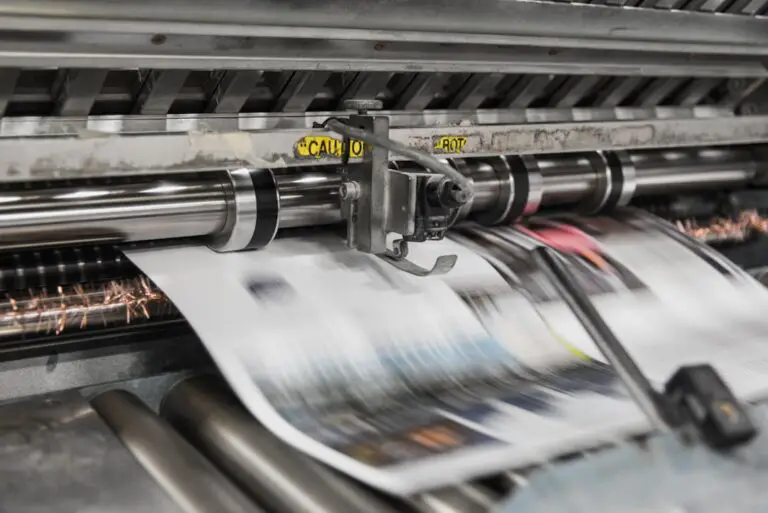Support our educational content for free when you purchase through links on our site. Learn more
What Material is 3D Print? Discover 12 Essential Types for Your Next Project! [2024] 🖨️
Are you ready to unlock the secrets of 3D printing materials? 🤔 Whether you’re a seasoned pro or just starting your journey into the world of 3D printing, knowing what materials to use can make all the difference in your projects. Imagine crafting a stunning prototype or a functional tool that not only meets your design specifications but also withstands the test of time! The right material can elevate your creations from ordinary to extraordinary.
In this article, we dive deep into 12 essential types of 3D printing materials, exploring their unique properties, applications, and the best practices for using them. Did you know that the most popular material, PLA, is made from renewable resources? 🌱 We’ll also share tips on how to choose the right material for your specific project needs, ensuring you get the best results every time. So, let’s get started and discover which materials can help you bring your wildest 3D printing dreams to life!
Key Takeaways
- Diverse Materials: Explore 12 different types of 3D printing materials, including PLA, ABS, PETG, and more.
- Process Insights: Understand the different 3D printing processes like FDM, SLA, and SLS, and how they influence material choice.
- Application Guidance: Learn how to choose the right material based on your project’s performance requirements and aesthetic desires.
- Common Challenges: Identify and overcome common challenges associated with 3D printing materials.
Ready to stock up on the best materials for your 3D printing adventure? 👉 Shop the best 3D printing materials such as PLA Filament | ABS Filament | PETG Filament and elevate your projects today! 🛒
Table of Contents
- Quick Tips and Facts about 3D Printing Materials
- The Evolution of 3D Printing Materials: A Brief History
- Exploring the World of Plastic 3D Printing Materials and Processes
- FDM 3D Printing: The Most Popular Method
- SLA 3D Printing: Precision and Detail Unleashed
- SLS 3D Printing: Strength Meets Versatility
- Comparing Plastic 3D Printing Materials and Processes: Which is Best?
- Metal 3D Printing: The Future of Manufacturing
- Choosing the Right Plastic 3D Printing Material: A Framework
- How to Find the Best 3D Printing Material for Your Project
- Innovative and Emerging Materials in 3D Printing
- Common Challenges with 3D Printing Materials and How to Overcome Them
- Conclusion
- Recommended Links
- FAQ
- Reference Links
Quick Tips and Facts about 3D Printing Materials
Get started with 3D printing materials 🚀
Before diving into the world of 3D printing materials, here are some quick tips and facts to keep in mind:
- Thermoplastics can be melted and reshaped, while thermosets solidify permanently after curing.
- FDM (Fused Deposition Modeling) is the most common 3D printing process, using melted plastic filament to create objects layer by layer.
- SLA (Stereolithography) uses a laser to cure liquid resin into solid plastic, offering high resolution and accuracy.
- SLS (Selective Laser Sintering) uses a laser to fuse powdered plastic, creating strong and functional parts.
Material Properties 📊
When choosing a 3D printing material, consider the following properties:
- Tensile strength: Resistance to breaking under tension
- Flexural modulus: Resistance to bending under load
- Elongation: Resistance to breaking when stretched
- Impact strength: Ability to absorb shock and impact energy
- Heat deflection temperature: Temperature at which a material deforms under load
- Hardness (durometer): Resistance to surface deformation
- Tear strength: Resistance to tearing
- Creep: Tendency to deform permanently under stress
- Compression set: Permanent deformation after compression
Common 3D Printing Materials 📦
- PLA (Polylactic Acid): A biodegradable thermoplastic made from renewable resources
- ABS (Acrylonitrile Butadiene Styrene): A strong and impact-resistant thermoplastic
- PETG (Polyethylene Terephthalate Glycol): A strong and flexible thermoplastic
- Nylon: A strong and abrasion-resistant thermoplastic
- TPU (Thermoplastic Polyurethane): A flexible and elastic thermoplastic
Stay tuned for more in-depth information on 3D printing materials and processes! 🚀
The Evolution of 3D Printing Materials: A Brief History
From Humble Beginnings 🌱
The history of 3D printing materials dates back to the 1960s, when the first 3D printing technologies were developed. Initially, these technologies used materials like paper and metal to create simple objects.
The Advent of Thermoplastics 🔩
In the 1980s, thermoplastics like ABS and PLA became widely used in 3D printing. These materials offered improved strength and durability, making them suitable for a wider range of applications.
The Rise of SLA and SLS 💡
In the 1990s, SLA and SLS technologies emerged, using liquid resin and powdered plastic to create highly detailed and accurate objects. These technologies opened up new possibilities for 3D printing, including the creation of complex geometries and functional parts.
Modern 3D Printing Materials 🌈
Today, there are hundreds of 3D printing materials available, each with its own unique properties and applications. From biodegradable plastics to metal-filled filaments, the range of materials continues to expand, enabling new and innovative applications for 3D printing.
Exploring the World of Plastic 3D Printing Materials and Processes
FDM: The Most Popular Method 📈
FDM (Fused Deposition Modeling) is the most common 3D printing process, using melted plastic filament to create objects layer by layer. FDM is widely used for prototyping, functional parts, and consumer products.
SLA: Precision and Detail Unleashed 🔍
SLA (Stereolithography) uses a laser to cure liquid resin into solid plastic, offering high resolution and accuracy. SLA is ideal for creating complex geometries, detailed models, and functional parts.
SLS: Strength Meets Versatility 💪
SLS (Selective Laser Sintering) uses a laser to fuse powdered plastic, creating strong and functional parts. SLS is widely used for aerospace, automotive, and medical applications.
FDM 3D Printing: The Most Popular Method
How FDM Works 🔩
FDM uses melted plastic filament to create objects layer by layer. The process involves:
- Extrusion: The plastic filament is melted and extruded through a heated nozzle.
- Deposition: The melted plastic is deposited onto a build platform or previous layer.
- Cooling: The plastic cools and solidifies, forming a solid bond with the previous layer.
FDM Materials 📦
FDM materials include:
- PLA: A biodegradable thermoplastic made from renewable resources
- ABS: A strong and impact-resistant thermoplastic
- PETG: A strong and flexible thermoplastic
- Nylon: A strong and abrasion-resistant thermoplastic
- TPU: A flexible and elastic thermoplastic
SLA 3D Printing: Precision and Detail Unleashed
How SLA Works 🔍
SLA uses a laser to cure liquid resin into solid plastic. The process involves:
- Curing: The liquid resin is cured by a laser, creating a solid bond between molecules.
- Layer formation: The cured resin forms a solid layer, which is then lifted out of the resin bath.
- Repeating: The process is repeated, building up layers to create the final object.
SLA Materials 📦
SLA materials include:
- Standard resins: General-purpose resins for prototyping and functional parts
- Clear resin: Transparent resin for creating clear objects
- Draft resin: Fast-curing resin for rapid prototyping
- Tough resins: High-impact resistant resins for functional parts
- Rigid resins: High-stiffness resins for structural parts
SLS 3D Printing: Strength Meets Versatility
How SLS Works 💡
SLS uses a laser to fuse powdered plastic, creating strong and functional parts. The process involves:
- Fusing: The powdered plastic is fused by a laser, creating a solid bond between particles.
- Layer formation: The fused plastic forms a solid layer, which is then lowered into the powder bed.
- Repeating: The process is repeated, building up layers to create the final object.
SLS Materials 📦
SLS materials include:
- Nylon: A strong and abrasion-resistant thermoplastic
- Polypropylene: A strong and flexible thermoplastic
- TPU: A flexible and elastic thermoplastic
- Nylon composites: High-strength composites for aerospace and automotive applications
Comparing Plastic 3D Printing Materials and Processes
FDM vs. SLA vs. SLS 🤔
When choosing a 3D printing material and process, consider the following factors:
- Resolution: SLA offers the highest resolution, followed by SLS and FDM.
- Accuracy: SLA and SLS offer high accuracy, while FDM can be less accurate.
- Material properties: Each process has its own unique material properties, such as tensile strength and flexural modulus.
- Cost: FDM is generally the most affordable, followed by SLA and SLS.
Metal 3D Printing: The Future of Manufacturing
The Rise of Metal 3D Printing 🔩
Metal 3D printing is a rapidly growing field, offering new possibilities for manufacturing and production. Metal 3D printing technologies include:
- SLM (Selective Laser Melting): Uses a laser to melt and fuse metal powder.
- EBM (Electron Beam Melting): Uses an electron beam to melt and fuse metal powder.
- LMD (Laser Metal Deposition): Uses a laser to melt and deposit metal wire or powder.
Metal 3D Printing Materials 📦
Metal 3D printing materials include:
- Aluminum: A lightweight and corrosion-resistant metal
- Titanium: A strong and lightweight metal
- Steel: A strong and durable metal
- Copper: A conductive and corrosion-resistant metal
Choosing the Right Plastic 3D Printing Material: A Framework
Consider Your Application 🤔
When choosing a plastic 3D printing material, consider the following factors:
- Performance requirements: Tensile strength, flexural modulus, elongation, impact strength, and heat deflection temperature.
- Material properties: Biodegradability, recyclability, and sustainability.
- Cost: Material cost, printing time, and post-processing requirements.
Use the Interactive Material Wizard 🔮
Use online tools and resources, such as the interactive material wizard, to help you choose the right material for your application.
How to Find the Best 3D Printing Material for Your Project
Research and Testing 🔬
Research and testing are crucial when selecting a 3D printing material. Consider the following steps:
- Define your requirements: Determine the performance requirements and material properties needed for your project.
- Research materials: Explore different materials and their properties, using online resources and material databases.
- Test materials: Test and evaluate different materials, using sample prints and mechanical testing.
Consult with Experts 💬
Consult with 3D printing experts and material specialists to get advice and guidance on selecting the best material for your project.
Innovative and Emerging Materials in 3D Printing
New Materials and Technologies 🔮
The 3D printing industry is constantly evolving, with new materials and technologies emerging. Some examples include:
- Bioplastics: Biodegradable plastics made from renewable resources.
- Graphene: A highly conductive and strong material.
- Nanomaterials: Materials with unique properties at the nanoscale.
The Future of 3D Printing Materials 🔮
The future of 3D printing materials is exciting and rapidly evolving. Expect to see new and innovative materials emerging, with improved properties and applications.
Common Challenges with 3D Printing Materials and How to Overcome Them
Challenges and Solutions 🤔
Common challenges with 3D printing materials include:
- Warpage and shrinkage: Use a heated chamber or a brim to prevent warpage and shrinkage.
- Layer adhesion: Use a strong adhesive or a bonding agent to improve layer adhesion.
- Material degradation: Use a UV-resistant material or a protective coating to prevent material degradation.
Best Practices 📝
Best practices for working with 3D printing materials include:
- Follow material guidelines: Follow the manufacturer’s guidelines for material handling and storage.
- Use proper printing settings: Use proper printing settings, such as temperature and humidity, to ensure optimal material performance.
- Monitor material quality: Monitor material quality and performance, and adjust printing settings accordingly.
Conclusion
In the ever-evolving world of 3D printing, understanding the materials available is essential for achieving the best results. We’ve explored a variety of 3D printing materials and processes—from FDM to SLA and SLS—each with its own unique strengths and weaknesses.
Key Takeaways:
- FDM is the most accessible and cost-effective method, ideal for beginners and casual users.
- SLA offers unparalleled detail and precision, making it perfect for intricate designs.
- SLS provides durability and strength, suitable for functional applications.
Summary of Pros and Cons:
| Method | Pros | Cons |
|---|---|---|
| FDM | Affordable, wide material availability, user-friendly | Lower accuracy, visible layer lines |
| SLA | High resolution, smooth surface finish | More expensive, UV sensitivity |
| SLS | Strong functional parts, no support structures needed | Limited materials, higher equipment cost |
Overall, if you’re a hobbyist or just starting out, we confidently recommend FDM with PLA for its ease of use and eco-friendliness. For professionals seeking precision, SLA is the way to go, while SLS is perfect for robust applications. Whichever you choose, understanding the properties and applications of these materials will help you create amazing 3D printed objects! 🎉
Recommended Links
👉 Shop the Best 3D Printing Materials 🛒
- PLA Filament: Amazon | eBay | Thingiverse
- ABS Filament: Amazon | eBay | Thingiverse
- PETG Filament: Amazon | eBay | Thingiverse
- Nylon Filament: Amazon | eBay | Thingiverse
Explore More 📚
FAQ
What is PLA material for 3D printing?
PLA (Polylactic Acid) is a biodegradable thermoplastic derived from renewable resources like corn starch. It’s popular in 3D printing due to its ease of use, low warping, and vibrant colors. Pros include its eco-friendliness and minimal odor during printing. Cons involve lower heat resistance and brittleness compared to other materials like ABS.
Read more about “15 Exciting 3D Printing Projects for Students to Ignite Creativity in 2024! 🚀”
Is 3D printing environmentally friendly?
3D printing can be environmentally friendly, especially when using biodegradable materials like PLA. However, the overall environmental impact depends on the energy source used for printing and the lifecycle of the printed object. Adopting sustainable practices, such as recycling failed prints and using eco-friendly materials, can enhance its sustainability.
Read more about “Is 3D printing environmentally friendly?”
What material is not used in 3D printing?
While many materials can be 3D printed, some that are not typically used include glass, certain metals (without specialized equipment), and materials that can’t be melted or extruded. For example, traditional ceramics and some composite materials are challenging to work with in standard 3D printing processes.
Read more about “Discover 25 Incredible Products You Can 3D Print Today! 🖨️ …”
What is the easiest material to 3D print?
PLA is widely regarded as the easiest material to 3D print. Its low melting temperature, minimal warping, and good adhesion make it beginner-friendly. Additionally, it’s available in a variety of colors and finishes, making it a popular choice for hobbyists and educators.
Read more about “Unveiling the True Cost of 3D Printing: 7 Factors & Cost Saving Strategies … 💰”
How do I choose the right 3D printing material?
Choosing the right material involves considering factors such as the intended use of the printed object, required strength and flexibility, environmental conditions, and aesthetic preferences. Researching material properties and conducting tests can help in making an informed decision.
Read more about “💸 Unveiling the Truth: 12 Key Factors That Impact 3D Printer Model Costs …”
Can I 3D print food-safe materials?
Yes, but it’s crucial to select specific food-safe filaments, such as certain grades of PLA or PETG. Always verify that the material is certified as food-safe and ensure proper post-processing to eliminate any contaminants.
Read more about “3D Printing Failure Rates: The Truth Behind 7 Common Print Fails … 🖨️”
Reference Links
- Stratasys – PLA: Renewable Plastic 3D Printing Material
- Formlabs – 3D Printing Materials
- 3D Printing Materials Overview – 3D Hubs
By understanding the various materials available for 3D printing, you can make informed choices that enhance your projects and unleash your creativity! Happy printing! 🎉




